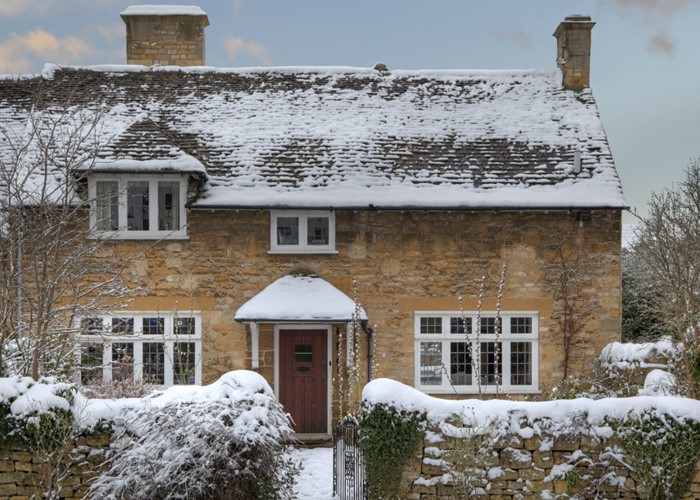What the future holds for landlords

Christina Jordan takes a look at the latest figures and finds out what's going on in the private rented sector...
There's a lot of waffle spouted in the property and mortgage markets and it's often from those with a vested interest. Nothing wrong with a bit of spin, as long as we all understand where it's coming from.
But sometimes you really need to go back to the basics to get to the nitty gritty of a subject and I want to see what's really going on with landlords and the private rented sector. And this means trawling through the figures rather than relying on a press release -- gulp!
Poring through the latest quarterly indices from the Association of Residential Letting Agents (ARLA), Paragon Mortgages and the Council of Mortgage Lenders may not sound like an interesting way to spend a morning. But sometimes having a good look through the figures can illuminate a subject and cut through the waffle.
So what is really going on in the private rented sector and buy-to-let market?
Warning: here come the numbers!
Headline stats
One of Association of Residential Letting Agents' key indicators, average yields, was up in quarter two of this year compared to quarter one.
Returns on houses rose from 4.8% to 5.1% and flats from 4.9% to 5.0%.
According to buy-to-let lender Paragon Mortgages (whose own average yield figure is slightly higher at 6.4%), landlords in the Midlands achieved the strongest yield at 7.4%, followed by those in the North East (6.8%) and North West (6.7%).
Other areas included Wales (6.0%), Scotland (6.0%), the South West (5.9%) and the South East (5.8%)
The rental yield is the property's rental income as a percentage of its current capital value and therefore it's worth noting that the rise in yield has as much to do with falling capital values as it does strong rental income.
Indeed, most members of the Association of Residential Letting Agents recently reported decreased achievable rent levels on all types of rented property.
Capital values of rented houses dropped in quarter two by a significant 10.6%, but much of this came from large falls in London (12.2%) and the South East (11.3%).
In the rest of the UK values dropped by just 4.7%.
Values of flats also dropped but not to the same degree -- 3% in London and 3.6% in the rest of the UK.
Supply and demand
There has been much discussion about the increased demand in the rented sector from those who want to buy but can't get the finance, as well as increased supply from accidental landlords who cannot sell their home so rent it out instead.
But what do the numbers say?
According to the Association of Residential Letting Agents, the supply of rented residential properties is currently outstripping demand from tenants, and this is especially acute in central London.
Unsurprisingly then, void periods between tenancies increased slightly in quarter two to 30 days -- the highest level in five years.
Yet despite this, landlords are confident.
Bullish landlords
Almost a third of landlords believe demand from tenants will increase in the next year, while half of them reckon it will remain constant. Many landlords are prepared to put their money where their mouth is, with 16% of the Association of Residential Letting Agents members saying landlords in their area are still buying new properties -- a figure that has doubled in just three months!
And the vast majority of landlords don't even expect to sell any of their properties in the next year.
On average, landlords hold onto their 12.5 properties for 17 years (a figure that has risen slightly in the last few months), and over a quarter expect to keep them for over 20 years. This highlights that the majority of landlords really are in it for the long term, not to 'get rich quick' as so often assumed.
They are also borrowing at relatively modest loan-to-value ratios of 71% of a property's value. Of course this is impacted by current lender constraints on high loan-to-value lending. Across portfolios LTV ratios are even lower at an average of 57%, reflecting a sector with a large buffer against negative equity.
However.....
Buy-to-let mortgage arrears rose sharply in the first quarter of this year and, although they dropped back again by a significant 17% in quarter two, they still stand at 2.49% of all buy-to-let mortgages.
There is, of course, a direct link between these arrears and the fact that two-thirds of letting agents have seen an increase in the number of tenants struggling to meet their rental payments in the last six months.
The trouble with mortgages
Accessing affordable mortgage finance is still a problem for many landlords, with the majority of those who bought a property this year having used their own funds to do so. Around a third used mortgage finance. Many landlords said the lack of available mortgage finance was their main obstacle to expanding their portfolio in the current market.
Landlords want to buy and many are positive about the future of the market. But restrained mortgage lending continues to stifle the market and will do for the foreseeable future -- latest Council of Mortgage Lenders figures show buy-to-let lending continues to decline.
Since many specialist lenders rely on the wholesale markets, it could be some time yet before things improve for landlords on the mortgage front. Buy-to-let lenders are at the back of a long queue for mortgage funding.
Whatever your views on landlords or the buy-to-let market, a healthy private rented sector is essential to the overall health of the housing market. A contracting or stagnating private rented sector will simply push up rents for those who can least afford an increase.
More: Homebuyers: Last chance to save £1,750! | Top tips for first-time landlords
Most Recent
Comments
-
As for Nickpike - from the other side of the fence I see tenants' 'rights' as much more protected than landlords'. Not much in the HMO regs or the Tenancy Deposit Scheme or the Local Housing Allowance rules that reinforces tenants' responsibilites in return for their rights. As usual, every landlord is affected by rules to control the unscrupulous few; I just like to see the same enthusiasm for controlling the few unscrupulous tenants...
REPORT This comment has been reported. -
Matchmade - a potentially good suggestion re houseshares and 4-5 bedroom property, but the dreaded Houses in Multiple Occupancy (HMO) licensing regulations mean it's a non-starter for most landlords and properties (any property let to 4 or more non-related tenants, or on more than 2 floors needs an HMO license, for which certain property 'improvements' are required and the landlord must not only pay but also jump through bureaucratic hoops). I think this is probably contributing to the glut of larger properties on the market, and is probably pushing a premium onto properties suitable for three sharers (eg 2-bed houses/flats with separate reception and kitchen)
REPORT This comment has been reported. -
matchmade, a very sound analysis. I have had first hand experience of what you're referring to - I have a five bedroom flat in London that I rent to students, who are currently choosing to jump into all the townhouses that owners are trying to let to save on their mortgage costs. Although I'm not sure I agree that all reluctant landlords should look to sell. Given that the government is looking to change the BofE's remit to a combination of inflation targeting and economic stability, the only scenario under which interest rates will increase is if inflation rises again. In order for this to happen, the excess capacity needs to come out of the economy, creating competition for goods and pushing prices up. This can only occur if consumption picks up, or the economy is reorganised to be more efficient. Both of these will stimulate economic growth and the creation of new jobs, boosting salaries and encouraging people to rent or buy their own place, and pushing up rental demand. Whilst the increase in demand and rents might not outpace the rise in interest rates, there is a reasonable chance that reluctant landlords will be able to keep their rents above their mortgage payments, and even move back into their old house. Personally, I'd say what I always say - if you are happy to keep renting your home and can afford to comfortably cover the mortgage then keep it up. If you can't, then sell up. Oh, and nickpike, I'd be happy to commit to 2 years plus with rental tied to the RPI, regardless of whether the index is going up or down. The only problem is that mortgage lenders won't do this - I believe they're worried about tenants having excessive security of tenure if they have to repossess. As for house prices 'needing' to drop to about half of what they were at peak...it'd be nice but until the government sorts out its housebuilding strategy it's unlikely to happen!
REPORT This comment has been reported.
Do you want to comment on this article? You need to be signed in for this feature









09 September 2009